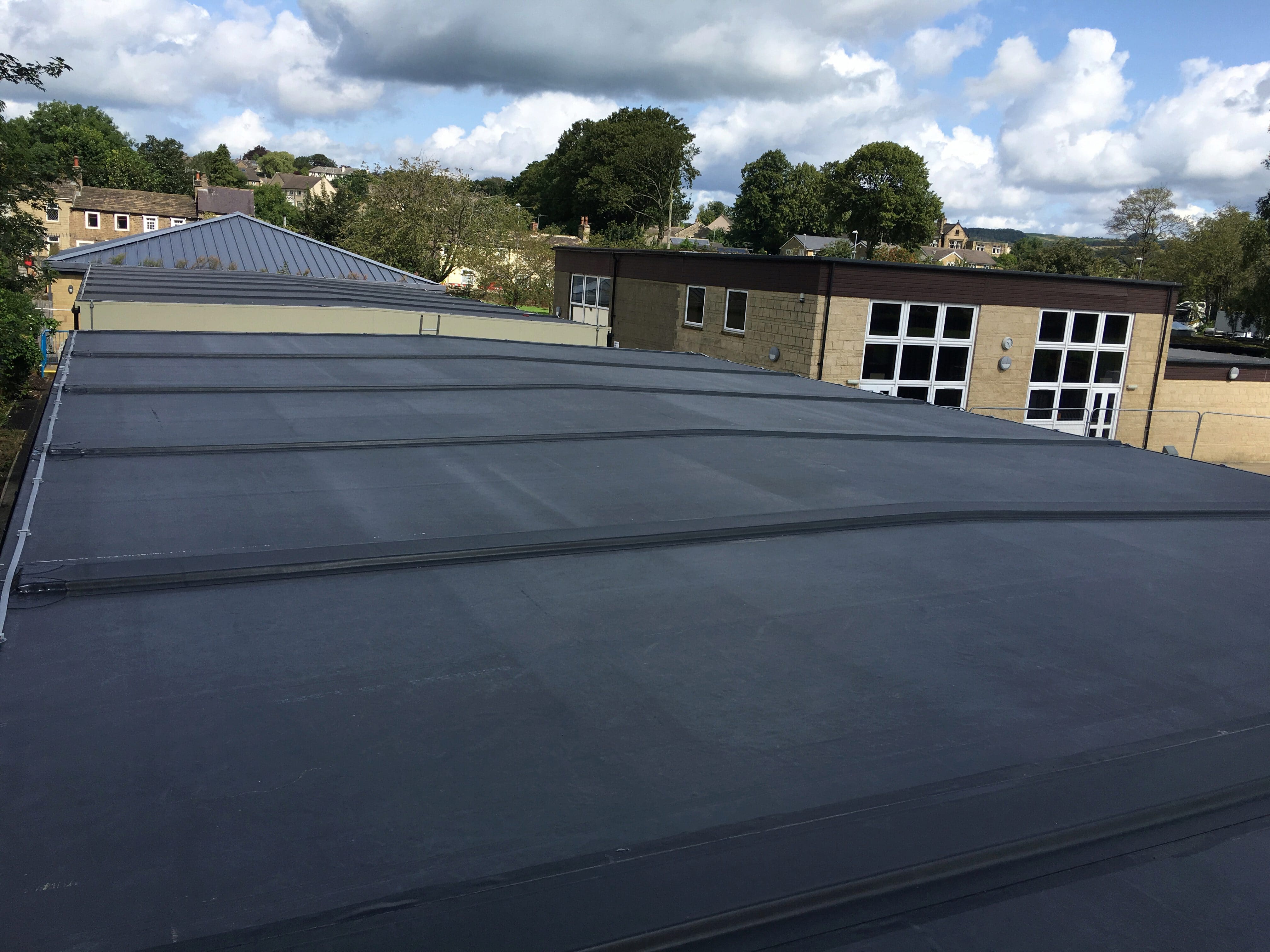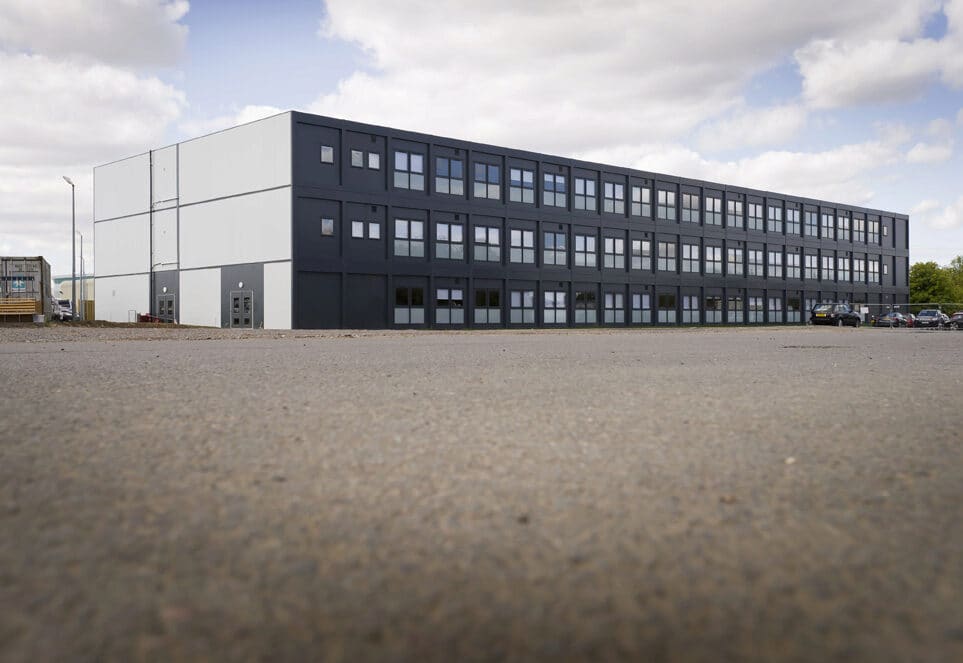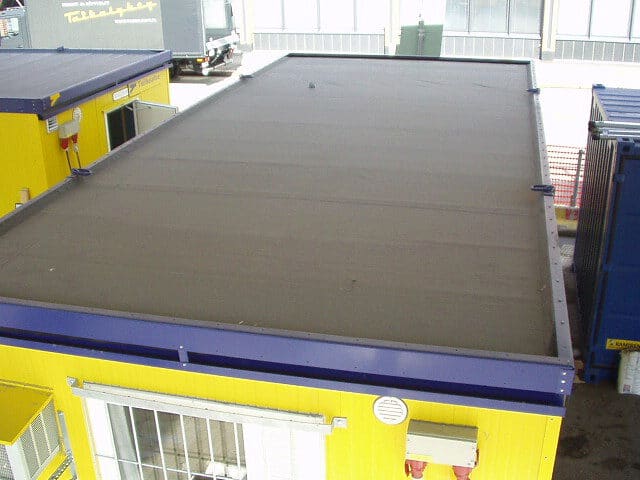RubberGard EPDM contributes to circular construction through modular building
Circular economy is gaining more and more attention and is increasingly being recognized among different industries and societies. It brings a potential solution to the tension between the growing demand and the limited supply of materials. The circular economy concept of reduction, reuse and recyclability of materials and components has already been successfully applied to several products, from electronic goods to clothing, but to a lesser extent for construction and building components.
In line with this, the recent European Green Deal policy aims to transform the EU into a fair and prosperous society with a modern, resource-efficient and competitive economy where there are no net emissions of greenhouse gases by 2050 and where economic growth is decoupled from resource use.
The construction industry consumes a significant amount of global resources and generates a vast amount of waste. However, it counteracts this by contributing to the shift towards a circular economy using more circular building stock. Modular construction perfectly fits the ideology of circular economy and can contribute to a circular building stock. It can also potentially be a key driver in carbon footprint reduction in the construction sector and improve its sustainability credentials.
Modular construction offers environmental advantages such as resource and waste reduction, reusability, adaptability and recyclability of all components. It is demonstrated that prefabricated buildings are key to material savings, waste reduction, reuse of components and various other forms of optimization for the construction sector. Modularity also allows to modify, deconstruct and relocate the building, reusing its parts almost like Lego blocks. Modular buildings are a new breed of living buildings. These buildings, which can think, sense and adapt will be the cornerstone of modern, sustainable cities.
In recent years, we have seen a surge in demand for modular construction, not just for residential properties but also for public buildings such as schools and hospitals and for commercial buildings such as hotels, shopping malls, etc.
Modular construction involves creating the property offsite in a factory environment. Factory fabrication offers a very attractive option for projects where timescales are tight or site/weather conditions are challenging. Modules are created in large chunks, which are then transported and assembled on the construction site.
Modular construction offers a wide range of advantages over conventional building practices, many of which are being leveraged for specific sectors where cost, time and site challenges make it particularly beneficial.
- Quicker build time – thanks to the modules being built offsite in a factory, in a well-protected environment, the amount of time and personnel required on-site is significantly reduced. There is also less site disruption and less constraints on weather factors, making it a more efficient build program. Site works and the construction of modular units can take place at the same time, leading to significant reductions in the program.
- Improved quality and consistency – factory-build practices enable manufacturing-style quality assurance checks to be embedded throughout the construction process. This avoids site delays for snagging issues and supports high standards of consistent build quality. From a roofing perspective, the water tightness of each module can be checked and verified following the installation of the RubberGard EPDM system and stored until it is required on site.
- Lower cost – the reduction in program duration and amount of site personnel often result in cost savings, which enables a higher proportion of the project’s budget to be dedicated to high-quality materials.
- Reduced health and safety risk – with most of the construction work carried out in a controlled factory environment, the overall health and safety hazards associated with a project’s site phase are significantly reduced.
- Reduced exposure to weathering and contaminants – on any site, once the RubberGard EPDM roofing membrane covers the substrate, the roof is completely watertight. In modular building, the roof area of each module is covered with a fully adhered RubberGard EPDM membrane prior to being taken to the construction site. As much detailing as possible is also carried out in factory conditions. This minimizes the substrate’s exposure to dust, pollution and moisture, significantly reducing the risks associated with substrate conditions.
- Possibility to adapt/reuse/relocate – the customer has the freedom to relocate or adapt the building modules after construction.
With the materials available to construct modular buildings, such as RubberGard EPDM roofing membrane, modular construction can be used to offer improved building quality and performance over the long term. A proven building material with many reference projects still performing well more than 40 years after its first installation, RubberGard EPDM has become a roofing system of choice for modular projects, thanks to its advantages during the building phase and throughout the service life of the finished building. The RubberGard EPDM roofing system is completely aligned with modular building concepts, allowing not only design flexibility but also the possibility to adapt to future changes, dismantle, reuse or relocate the building even decades after its initial construction.
RubberGard EPDM is both strong and flexible with excellent puncture resistance, ensuring a resilient solution within a busy factory environment. Requiring no torch or hot works of any kind during installation, its cold applied system can be fully adhered or mechanically fixed to the substrate and is almost completely odourless. To address the management of volatile organic compounds (VOC’s) and solvents in a factory environment, Elevate has even developed a water-based adhesive to ensure that the factory installation process is safe and virtually odourless.
Detailing and sealing the bay-to-bay joints onsite is also quick and easy with Elevate’s range of QuickSeam accessories, developed as part of the RubberGard EPDM system. Even if the building must be modified or relocated after a long time, detailing can be easily done, giving life once again to an old material but performing like a new membrane. This versatility, safety and ease of use has made RubberGard EPDM extremely popular for modular projects across a wide variety of sectors.
Modular construction may not always be the right choice for every project, but it is increasingly being considered as a potentially advantageous alternative to conventional building methodologies, meeting market demands as well as the challenges posed by sustainable building practices. That is why it is so important that manufacturers like Elevate work together with the modular sector to ensure that the buildability and performance profiles of their products meet the requirements of modular buildings, bringing more flexibility to this growing trend and supporting circular construction practices.


